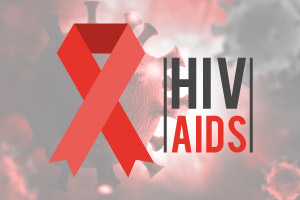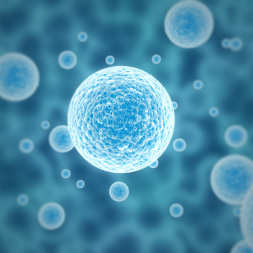Online courses directory (423)
Este curso está diseñado para que los estudiantes adquieran los conocimientos necesarios para distinguir los cuatro tipos de tejidos celulares que conforman el organismo. Está dirigido a estudiantes de Medicina, Biología, Veterinaria, Fisioterapia y Enfermería
<p>This online course - HIV/AIDS - Awareness & Prevention - uses a straightforward style to deliver a clear and effective basic AIDS awareness education program. </p> <br /> <p>It covers basic information about HIV/AIDS, from having a HIV test to living with HIV or AIDS. </p> <br /> <p>Being aware of this disease is the first step in taking action. </p>
In this course you will learn the basics of the life-cycle assessment (LCA) method for holistic environmental analysis of products, technologies, and systems. LCA sheds light on the environmental implications of the consumption and behavioral choices we all make on a daily basis.
How do we read and model fictional minds? Introducing cognitive poetics: the application of cognitive science to literary reading.
Introduction to the science of human origins, the fossil and archaeological record, and genetic ancestry of living and ancient human populations. The course emphasizes the ways our evolution touches our lives, including health and diet, and explores how deep history may shape the future of our species.
Surveys the literature on the cognitive and neural organization of human memory and learning. Includes consideration of working memory and executive control, episodic and semantic memory, and implicit forms of memory. Emphasizes integration of cognitive theory with recent insights from functional neuroimaging (e.g., fMRI and PET).
This course is an introduction to cognitive development focusing on children's understanding of objects, agents, and causality. It develops a critical understanding of experimental design. The course discusses how developmental research might address philosophical questions about the origins of knowledge, appearance and reality, and the problem of other minds. It provides instruction and practice in written communication as needed for cognitive science research (including critical reviews of journal papers, a literature review and an original research proposal), as well as instruction and practice in oral communication in the form of a poster presentation of a journal paper.
This course will focus on developing integrative skills through directed reading and analysis of the current primary literature to enable the student to develop the capstone project as the overall final exam for the specialization in systems biology.
Integrative Biology 131: General Human Anatomy. Fall 2005. Professor Marian Diamond. The functional anatomy of the human
The course will start with an overview of the central and peripheral nervous systems (CNS and PNS), the development of their structure and major divisions. The major functional components of the CNS will then be reviewed individually. Topography, functional distribution of nerve cell bodies, ascending and descending tracts in the spinal cord. Brainstem organization and functional components, including cranial nerve nuclei, ascending / descending pathways, amine-containing cells, structure and information flow in the cerebellar and vestibular systems. Distribution of the cranial nerves, resolution of their skeletal and branchial arch components. Functional divisions of the Diencephalon and Telencephalon. The course will then continue with how these various CNS pieces and parts work together. Motor systems, motor neurons and motor units, medial and lateral pathways, cortical versus cerebellar systems and their functional integration. The sensory systems, visual, auditory and somatosensory. Olfaction will be covered in the context of the limbic system, which will also include autonomic control and the Papez circuit. To conclude, functional organization and information flow in the neocortex will be discussed.
This course provides an introduction to the environmental aspects of sustainability, including renewable energy techniques, the impact of nonrenewable sources, air quality, storm water management, land use, and the built environment. Topics include climate change and greenhouse gases; wind, solar, water, and geothermal energy; bio-fuels; conservation techniques; global demand; legal and regulatory aspects; and job creation. After completing this course, students will be able converse knowledgeably about the broader context of sustainability and environmental impacts, social consequences and financial opportunities.
In this six-week course, you will learn the basics about our energy and climate obligations. You will also prepare yourself to continue learning as these issues evolve. You will evaluate demand-side (e.g. more efficient buildings and automobiles) and supply-side (e.g. solar and wind) strategies for more sustainable use of energy. The course will require fact-based analysis of our energy obligations and possible ways to meet them. Please also consider enrolling in Sustainable Energy Innovation which begins June 2.
This course is designed to help you get started as a behavioral science student, become familiar with the academic programs within the field, and prepare you for your first meeting with your academic advisor or academic counselor once you make your decision about which program to pursue.
The MIT Biology Department core courses, 7.012, 7.013, and 7.014, all cover the same core material, which includes the fundamental principles of biochemistry, genetics, molecular biology, and cell biology. Biological function at the molecular level is particularly emphasized and covers the structure and regulation of genes, as well as, the structure and synthesis of proteins, how these molecules are integrated into cells, and how these cells are integrated into multicellular systems and organisms. In addition, each version of the subject has its own distinctive material.
7.012 focuses on the exploration of current research in cell biology, immunology, neurobiology, genomics, and molecular medicine.
Acknowledgments
The study materials, problem sets, and quiz materials used during Fall 2004 for 7.012 include contributions from past instructors, teaching assistants, and other members of the MIT Biology Department affiliated with course #7.012. Since the following works have evolved over a period of many years, no single source can be attributed.
This introductory course defines biology and its relationship to other sciences. We examine the overarching theories of life from biological research and also explore the fundamental concepts and principles of the study of living organisms and their interaction with the environment. We will examine how life is organized into hierarchical levels; how living organisms use and produce energy; how life grows, develops, and reproduces; how life responds to the environment to maintain internal stability; and how life evolves and adapts to the environment. This course is a part of our Community College (CC-OLI) series. Courses in this series are particularly well-suited to the needs of introductory community college courses, but are open for use by any instructor or student.
Cell physiology is the branch of science that studies the structure and function of individual cells. Our increasing knowledge and understanding of cellular mechanisms and processes have led to great advances in all areas of biology and medicine. In this free online physiology course you will be introduced to the main topics in cell physiology such as the major components of a typical animal cell. You will learn about the mechanisms behind cell growth and multiplication, about the movement of substances into and out of cells, how energy is processed within the cell, and how and why cells maintain an electrical charge across their membranes called membrane potentials. This free online cell physiology course will be of great interest to all healthcare professionals who would like to learn more about the structure and function of cells, and to all students of biology and medicine who would like a greater knowledge and understanding of the mechanisms and processes involved in cell physiology.<br />
This is an introductory course for students with limited background in chemistry; chemical problem solving will be emphasized with the goal of preparing students for further study in chemistry.
This is a complete course in chemical stoichiometry, which is a set of tools chemists use to count molecules and determine the amounts of substances consumed and produced by reactions. The course is set in a scenario that shows how stoichiometry calculations are used in real-world situations. The list of topics (see below) is similar to that of a high school chemistry course, although with a greater focus on reactions occurring in solution and on the use of the ideas to design and carry out experiments. Note: Our chemistry courses are about to be improved and expanded! Thanks to upcoming support from the NSF, a project to further improve online chemistry education will result in new and improved materials delivered through OLI. New materials will be available from 2012 through 2014!
This course gives a mathematical introduction to neural coding and dynamics. Topics include convolution, correlation, linear systems, game theory, signal detection theory, probability theory, information theory, and reinforcement learning. Applications to neural coding, focusing on the visual system are covered, as well as Hodgkin-Huxley and other related models of neural excitability, stochastic models of ion channels, cable theory, and models of synaptic transmission.
Visit the Seung Lab Web site.
Gain an understanding of the natural world, how the web of life works, with illustrations from around the world.
Trusted paper writing service WriteMyPaper.Today will write the papers of any difficulty.






















